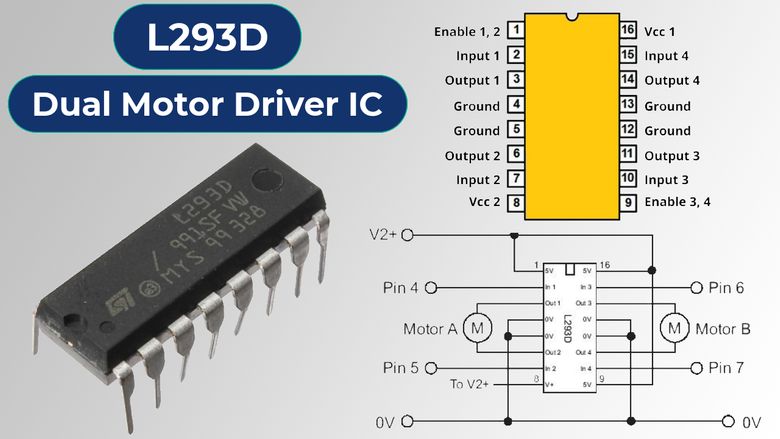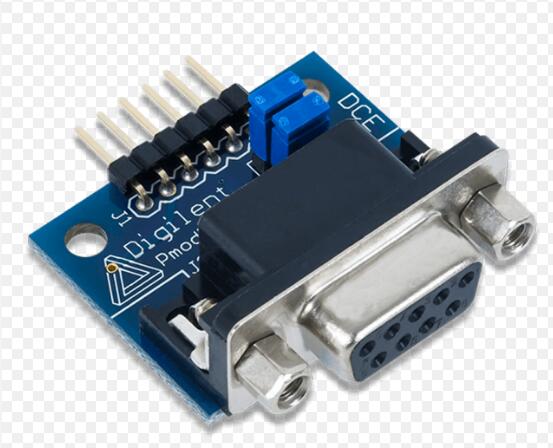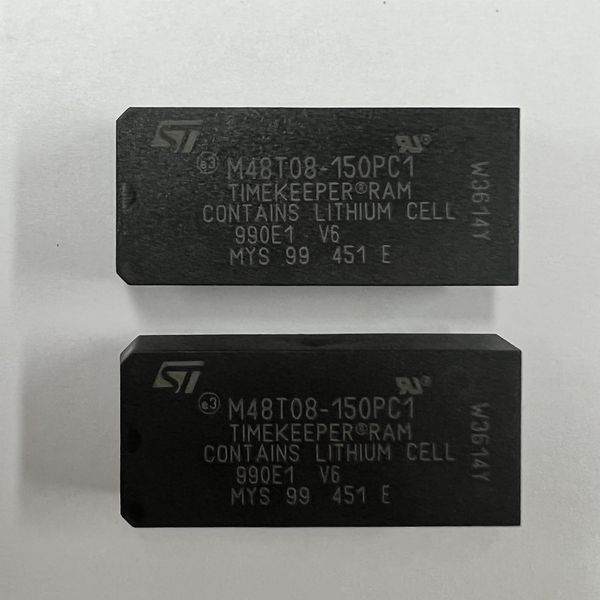L293D Overview:
The L293D is a popular quadruple high-current half-H driver integrated circuit (IC) commonly used in various motor driving applications. It is designed to control the direction and speed of DC motors, stepper motors, and other inductive loads.
Specifications:
- Manufacturer: Texas Instruments and other manufacturers
- Number of H-Bridges: 2 (per IC)
- Supply Voltage: Typically operates at 5V to 36V
- Output Current: 600mA per channel (1.2A peak)
- Number of Pins: 16 (in a 16-pin Dual In-Line Package or DIP)
- Control Interface: Logic inputs for controlling motor direction and speed
- Protection: Built-in diodes for back electromotive force (EMF) protection
-
DataSheet
Main Uses:
- Motor Driving: Primary application in driving DC motors and stepper motors.
- Robotics: Used in robot projects for motor control.
- Automation: Employed in various automation applications for controlling actuators and motors.
- DIY Electronics: Popular in hobbyist projects involving motor control.
- Embedded Systems: Integrated into embedded systems for controlling motion.
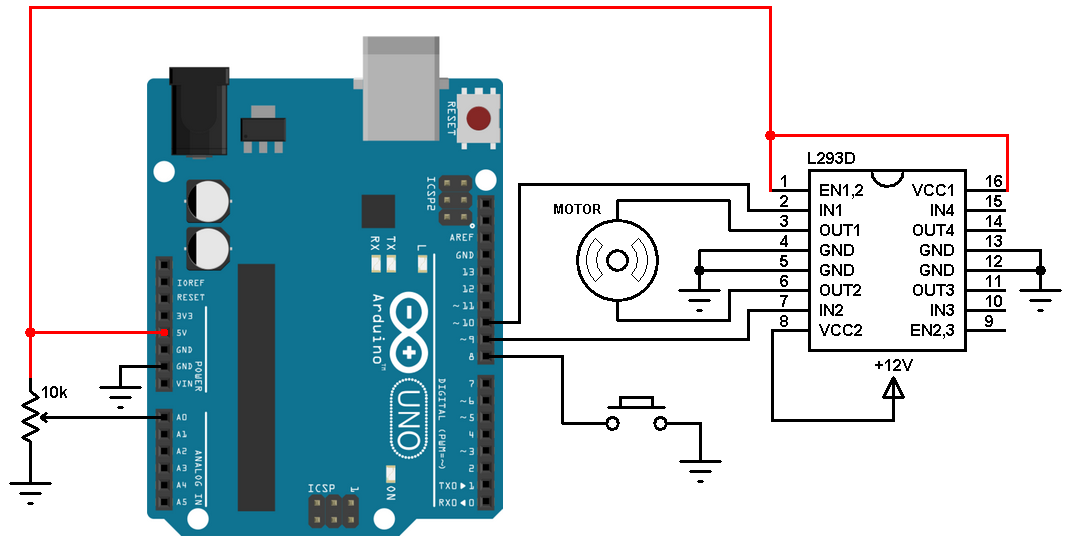
Features:
- H-Bridge Configuration: Enables bi-directional control of motors.
- Current Sensing: Some variants include current sensing for monitoring motor load.
- Built-in Protection: Diodes for protection against back EMF when driving inductive loads.
- High Voltage Capability: Can handle higher supply voltages for driving motors.
- Internal Thermal Shutdown: Protection mechanism to prevent overheating.
Application Fields:
- Robotics: Used in robotic platforms for controlling motor movement.
- Automotive: Integrated into automotive projects for controlling various motorized components.
- Industrial Automation: Employed in industrial automation for controlling actuators and conveyors.
- Consumer Electronics: Found in various consumer electronic devices for motor control.
- Educational Projects: Popular in educational settings for teaching motor control concepts.
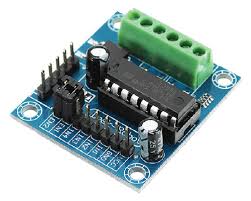
Working Principle:
- The L293D IC operates using H-bridge configurations that allow for controlling the direction and speed of motors.
- By toggling the appropriate input signals, you can control the motor's rotation direction and speed.
- The H-bridge design enables bidirectional current flow through the motor for forward and reverse motion control.
Alternative Models:
- L298N: A commonly used alternative with similar functionality for motor driving applications.
- DRV8833: Another alternative offering dual H-bridge functionality for driving motors.
- SN754410: Comparable IC known for driving inductive loads like motors.
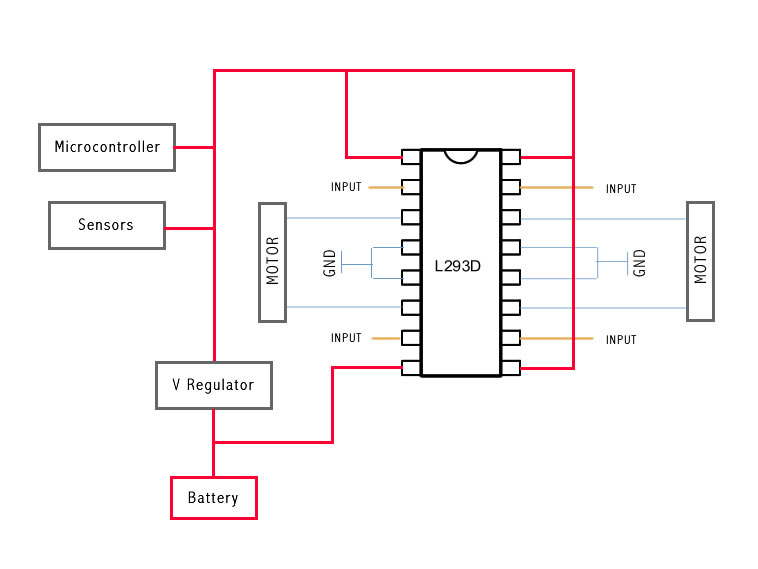
When selecting alternative models to the L293D, consider factors like current and voltage requirements, packaging, and additional features required for your specific application. Always refer to the datasheets of these ICs for detailed specifications and compatibility with your project needs.

